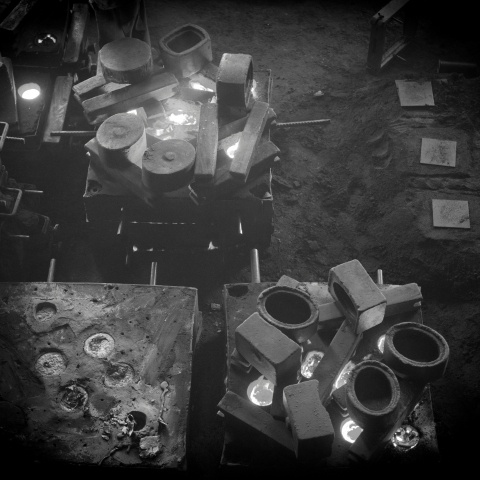White cast iron is a remarkable material known for its exceptional strength and durability. While it may not be as popular as its gray cast iron counterpart, it possesses unique properties that make it valuable in various industrial applications. In this guide, we will delve into the world of white cast iron, exploring its composition, properties, and applications.
Chapter 1: Understanding White Cast Iron White cast iron, often called white iron, is a type of cast iron with a high carbon content and an absence of graphite flakes. This absence of graphite gives it its characteristic white, crystalline fracture surface. Here's a closer look at its composition and properties:
1.1 Composition:
- White cast iron typically contains between 2.0% to 4.0% carbon.
- It also contains alloying elements like silicon, manganese, and chromium.
1.2 Properties:
- Exceptional hardness and wear resistance, making it suitable for abrasive environments.
- High tensile strength and excellent castability.
- Low ductility and impact resistance due to the absence of graphite.
Chapter 2: Production of White Cast Iron White cast iron is produced through a specific casting process that promotes the formation of white iron structures. The steps involved include:
2.1 Melting and Alloying:
- Melting iron and adding alloying elements to control the microstructure.
- Rapid cooling to prevent graphite formation.
2.2 Solidification:
- White cast iron solidifies as a hard, brittle material.
Chapter 3: Applications of White Cast Iron White cast iron's unique properties make it invaluable in various industries and applications:
3.1 Wear-Resistant Components:
- White cast iron is used to manufacture wear-resistant parts like grinding balls, crusher hammers, and liners in mining and cement industries.
3.2 Chilled Rolls:
- It is employed in the production of chilled rolls used in rolling mills for improved surface hardness.
3.3 Pump and Valve Components:
- White cast iron's resistance to wear and abrasion makes it suitable for pump impellers, valve seats, and other high-wear components.
3.4 Railroad Brake Shoes:
- It is used for the manufacturing of brake shoes in the railway industry due to its excellent wear resistance.
Chapter 4: Machining and Fabrication of White Cast Iron Working with white cast iron can be challenging due to its hardness. Proper machining and fabrication techniques are essential:
4.1 Preheating:
- Preheating the material can help reduce the brittleness and ease machining.
4.2 Use of Appropriate Cutting Tools:
- Employing specialized cutting tools designed for hard materials.
4.3 Grinding and Surface Treatment:
- Grinding can be used to achieve the desired surface finish.
Chapter 5: Maintenance and Care To maintain the integrity and longevity of components made from white cast iron, regular inspections and maintenance are crucial:
5.1 Inspection for Wear:
- Regularly inspect components for signs of wear and tear.
5.2 Lubrication:
- Proper lubrication can extend the life of white cast iron parts.
5.3 Repair and Replacement:
- When necessary, replace or repair worn components to avoid costly downtime.
Conclusion: White cast iron may be less known than its gray counterpart, but its remarkable strength and wear resistance make it an indispensable material in various industries. Understanding its composition, production process, and applications can help you appreciate its value in engineering and manufacturing. Whether you're involved in mining, manufacturing, or construction, white cast iron has the potential to enhance the durability and performance of critical components in your operations.


No comments yet